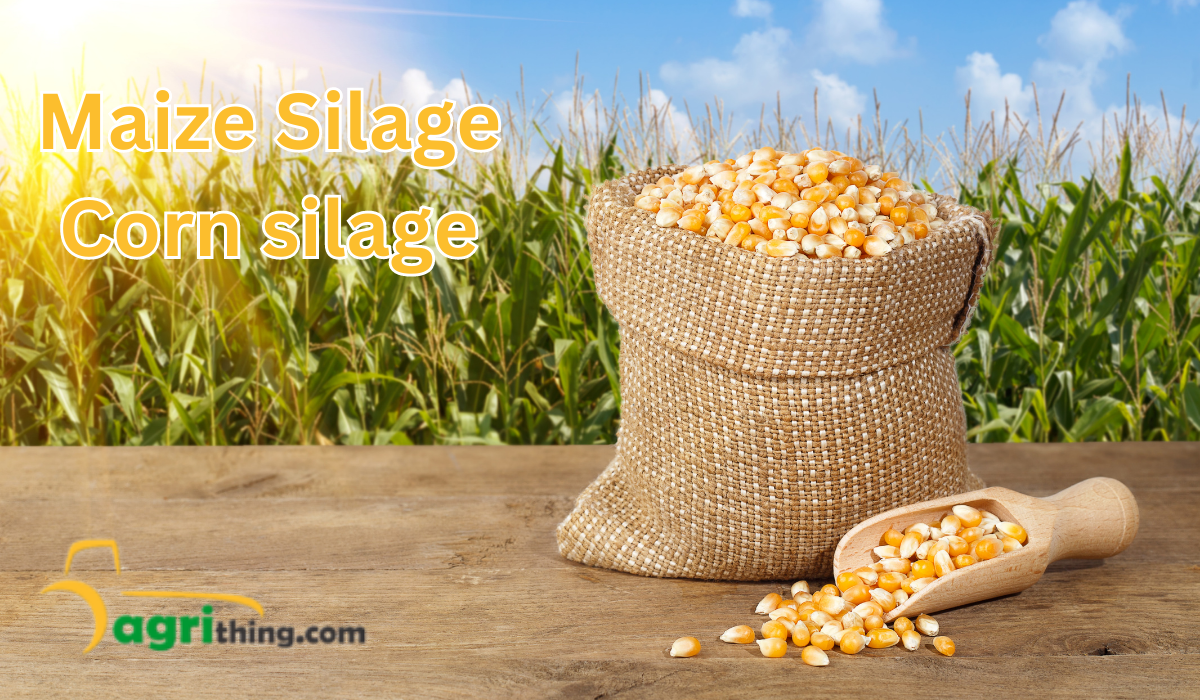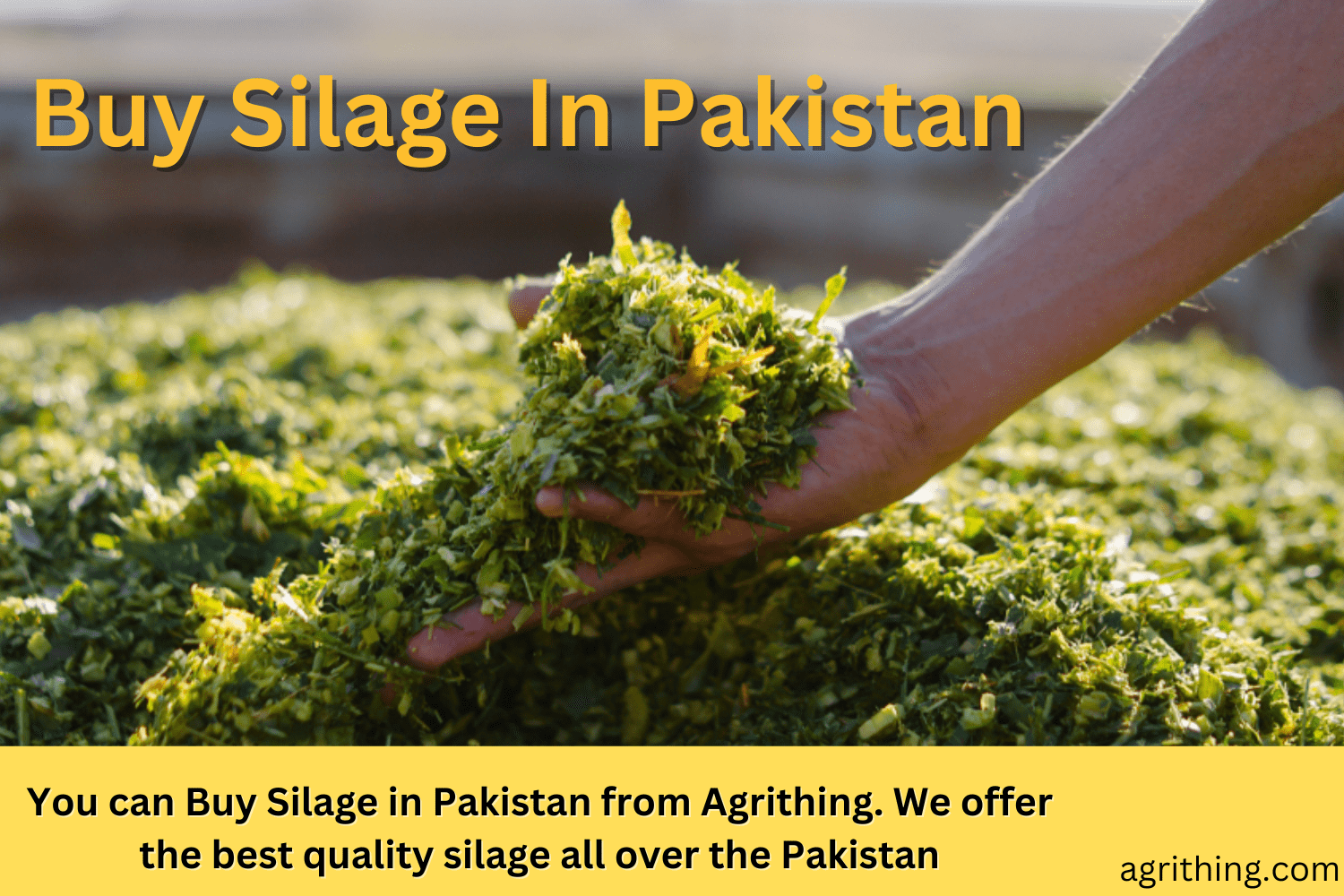Master Corn Silage Preservation: Boost Productivity & Profitability
Corn silage is important for feeding livestock like cows. Their nutritional and energy requirements are met by it. Dairy cows, beef cattle, and other animals that chew their cud eat a lot of it. To make sure corn silage stays nutritious and lasts a long time, it’s important to corn silage preservation it properly. There have been exciting new ways for farmers to store and preserve corn silage, making it even better.
Table of Contents
Importance of Preserve Corn Silage
Corn silage preservation is important for feeding livestock like cows. Nutrients and energy are provided by it. Dairy cows, beef cattle, and other animals that chew their cud eat a lot of it. To make sure corn silage stays nutritious and lasts a long time, it’s important to preserve corn silage properly. There have been exciting new ways for farmers to store and use corn silage, making it even better.
Traditional Methods of Corn Silage Preservation
Traditionally, farmers have used various methods to preserve corn silage, including chopping and packing, the fermentation process, and oxygen exclusion. These methods have been effective to some extent, but they often face challenges such as spoilage, nutrient losses, and decreased feed quality.
Chopping and Packing
The first step in corn silage preservation involves chopping the crop into small pieces, followed by tightly packing it into silos or storage structures.
Fermentation Process
After the corn silage is packed, it goes through a fermentation process. During this process, lactic acid bacteria change sugars into lactic acid, which makes the environment acidic and stops spoilage microorganisms from growing. To help preserve the silage even more, farmers cover it with plastic or special films that block oxygen. Mold growth is reduced as a result.
Innovations in Corn Silage Preservation
In the past few years, new and improved ways to preserve corn silage have been developed. These methods make storing and using corn silage much better and more efficient. Farmers now have innovative techniques that have changed the game when it comes to corn silage preservation and making it the most of this important feed.
Biological Additives
Biological additives, such as inoculants and microbial enzymes, have gained popularity in corn silage preservation. These additives contain beneficial microorganisms that enhance fermentation, improve nutrient retention, and reduce spoilage.
Organic Acid Preservatives
Organic acids, like propionic acid and acetic acid, are commonly used as corn fodder preservation. These acids help control the growth of spoilage microorganisms, ensuring the stability and quality of the stored silage.
Inoculants
Inoculants are specialized mixtures of bacteria, enzymes, and other compounds that improve the fermentation process. They aid in rapid acid production, inhibit harmful bacteria, and enhance the preservation of corn silage.
Improved Packaging Methods
Advanced packaging materials, such as oxygen barrier films and vacuum-sealed bags, have been developed to improve maize silage preservation. These materials prevent oxygen infiltration, reducing the risk of mold growth and maintaining the quality of the silage.
Advanced Storage Techniques
Innovations in storage techniques, such as silage inoculation systems, temperature-controlled silos, and airtight storage units, have significantly improved the preservation of corn silage. These methods create optimal conditions for fermentation and minimize nutrient losses.
Benefits of Innovations in Corn Silage Preservation
- More Nutrients: These techniques help retain a higher amount of nutrients in the feed, ensuring animals receive optimal nutrition.
- Better Feed Quality: By minimizing spoilage and maintaining freshness, these methods result in higher-quality feed, leading to healthier livestock.
- Less Feed Loss: Effective preservation methods reduce the amount of valuable feed lost during storage, optimizing feed efficiency.
- Reduced Spoilage and Mold: Innovations in preservation decrease the risk of spoilage and mold growth, reducing the need for wasted feed and promoting better animal health.
- Improved Digestibility: Properly preserved corn silage is easier for animals to digest, allowing them to extract maximum nutrition from their feed.
Building a Solid Foundation: Bunker Silo Construction
| Silage Storage | Techniques Description |
|---|---|
| Bunker Silos | -Large, open-air structures for horizontal storage. Require proper compaction and covering. |
| Silage Bags | -Long plastic bags used for airtight storage. -Provide flexibility and easy access to different silage varieties. |
| Silo Towers | -Vertical structures for storing silage. -Come in various sizes and shapes. -Require proper packing to minimize air infiltration. |
| Oxygen Limiting Silos | Techniques to create an anaerobic environment. oxygen barrier films, exclusion systems. Reduce spoilage and preserve nutrient content. |
| Silage Additives | -Used in conjunction with storage techniques. -inoculants, acids, enzymes. -Enhance preservation, inhibit mold growth, improve digestibility. |
| Proper Sealing and Covering | -Essential for all storage techniques. -Use plastic sheets, tires, or weighted covers. -Maintain anaerobic conditions for fermentation and preservation. |
Case Studies: Success Stories of Innovations in Corn Silage Preservation
Several case studies highlight the positive outcomes achieved through the adoption of innovative corn silage preservation techniques. These success stories showcase the practical benefits experienced by farmers who have embraced new methods.
Future Trends in Corn Silage Preservation
The field of corn fodder preservation continues to evolve, with ongoing research and development leading to new advancements. Some future trends that can be anticipated include the use of nanotechnology, precision fermentation, and data-driven preservation methods.
Conclusion
New methods of corn silage preservation have completely changed how farmers store and use this important feed. These innovations include things like biological additives, organic acid preservatives, better packaging, and advanced storage techniques. By using these methods, farmers can make sure that preserve corn silage keeps its nutritional value, lasts longer, and stays high quality. These silage innovations have many advantages, like keeping more nutrients in the feed, improving its quality, reducing waste, preventing spoilage, and making it easier for animals to digest.
Frequently Asked Question
How long can corn silage be stored using innovative preservation methods?
Innovative preservation methods can extend the storage life of corn silage for up to several years, depending on the specific techniques employed and the quality of the silage.
Are the innovative preservation methods suitable for small-scale farms?
Yes, innovative preservation methods can be adopted by farms of various sizes. However, it’s essential to assess the cost-effectiveness and compatibility with existing practices before implementation.
Do innovative preservation methods affect the taste of corn silage?
No, when properly preserved, the taste of corn silage remains consistent, ensuring palatability for livestock.
Are there any regulations or guidelines for using innovative preservation methods?
Regulations and guidelines may vary depending on the region or country. It’s advisable to consult local agricultural authorities or industry experts for specific recommendations.
Can innovative preservation methods be used for other types of silage besides corn?
Yes, many of the innovative preservation methods can be applied to other types of silage, such as grass, legumes, or whole-plant crops, with suitable adjustments and considerations.
Related Articles
Want to purchase top-quality silage? Visit our Agricomplex website to explore our wide range of silage products.
People Also Asked
What are the latest innovations in Preserve corn silage?
New ways to preserve corn silage have been developed. These include using additives, better sealing, cutting with precision, and using advanced storage structures.
How can corn silage be preserved for longer periods?
Corn silage can be preserved for longer periods by harvesting at the right moisture level, proper compaction, airtight sealing, and using additives or inoculants.
What are the benefits of using innovative methods for corn silage preservation?
The benefits of innovative methods for corn silage preservation include improved nutrient retention, reduced losses, enhanced feed quality, and extended storage periods.
Are there any risks or challenges associated with new corn silage preservation techniques?
The benefits of innovative methods for corn fodder preservation include improved nutrient retention, reduced losses, enhanced feed quality, and extended storage periods.
How do innovations in corn silage preservation contribute to sustainable farming practices?
Innovations in maize silage preservation contribute to sustainable farming by reducing waste, optimizing feed efficiency, and minimizing environmental impact.




